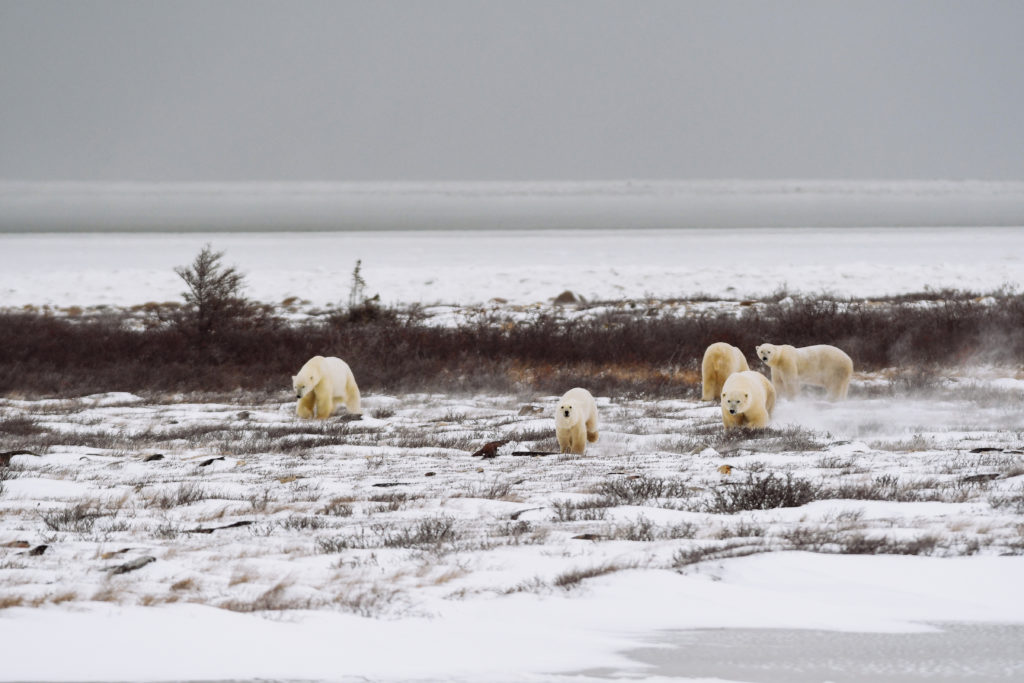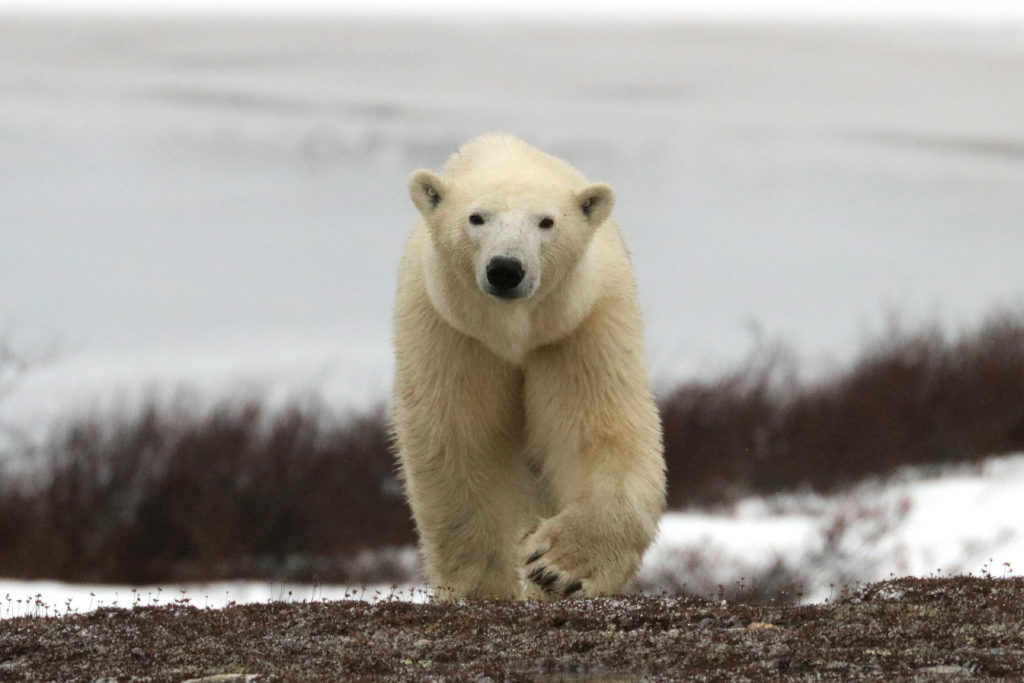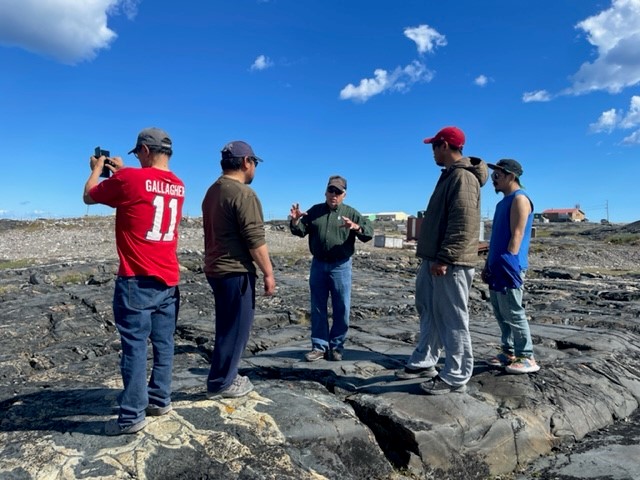How community-led patrols are keeping people and polar bears safe
Three years ago, WWF-Canada responded to a request from the Issatik Hunters and Trappers Organization to fund a locally run polar bear patrol program in the Nunavut community of Whale Cove. This past summer, Jason Harasimo, who helms our Arctic Species Conservation Fund program out of WWF-Canada’s Iqaluit office, visited the community to attend a training for patrollers. He writes about his experience and how the program is helping people and polar bears coexist in a rapidly changing Arctic.

I had my first encounter with a polar bear this summer in Whale Cove, Nunavut, an Inuit community of less than 500 people on the northwestern shore of Hudson Bay.
A call came in during a meeting with the Hunters and Trappers Organization about a mother and cub spotted at the dump outside of town. I travelled by ATV to the site a patroller in the program, who fired a non-lethal “banger” shot into the air. The sound scared the bears away, sending them on a safer path around the community.
The need for a patrol program in Whale Cove is becoming more and more evident as the number of polar bears seen in and around town grows. WWF-Canada is supporting the community-led effort to ensure both people and bears can thrive despite the rapid changes to their Arctic home.
New challenges for people and polar bears

There are many known reasons why we’re seeing more “sea bears” — polar bears are classifiued as marine mammals and their Latin species name is Ursus maritimus — on land. But the biggest factor is climate change.
Whale Cove is home to the western Hudson Bay sub-population, which rely on sea ice for winter and spring hunting grounds but spend their summers, when the bay isn’t frozen, on land. Now with sea ice forming later and receding sooner, polar bears are spending more time near towns, cabins and dumps in search of food — endangering people and bears alike.
The relationship between Inuit and polar bears is a long one, built on respect and reliance on the land that they share.
As you can imagine, such a large carnivore poses a great safety risk to communities. At the same time, the bears are also trying to manage these climate-related impacts to their habitat as best they can. Mothers with cubs are the most affected by a warming climate, and can also be the most dangerous.
From conflict to coexistence
The goal of the polar bear patrol program is to mitigate the risk of human-polar bear conflict. In Whale Cove, two frontline patrollers work in shifts during peak seasonal times when bears are more likely to be around waiting for the sea ice to form. They work with local Government of Nunavut conservation staff to coordinate efforts and, when necessary, deter bears before they pose a threat to the community.

As this is a fairly new program, local patrollers expressed an interest in formal training. In response, WWF-Canada supported a session by a longtime bear guard trainer Andy McMullen of Bear Wise. He spent several days with patrollers, teaching preventative measures that can lessen the likelihood of conflict and sharing best practices and knowledge from other communities across the Arctic.
The training is helping improve the capacity of patrollers, as are investments in handheld data collection devices to quantify occurrences and better understand patterns in polar bear behaviour. This information — alongside another Arctic Species Conservation Fund-supported project in Churchill, Manitoba that is tracking where “problem bears” go — helps us predict and proactively limit conflicts to keep communities and bears safe.
There’s no question that human-polar bear encounters will become increasingly common as the Arctic continues warming. But the patrol program in Whale Cove is proving that communities can adapt to this new reality and, working together, we can keep polar bear populations healthy.

